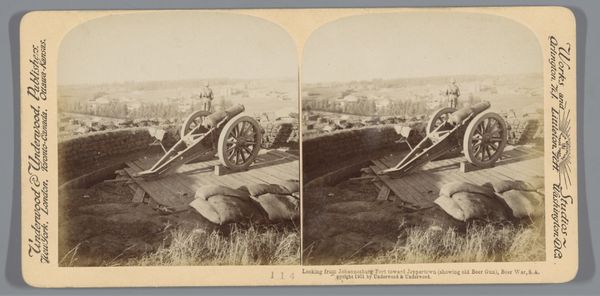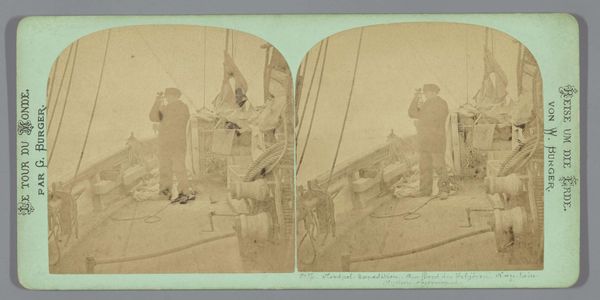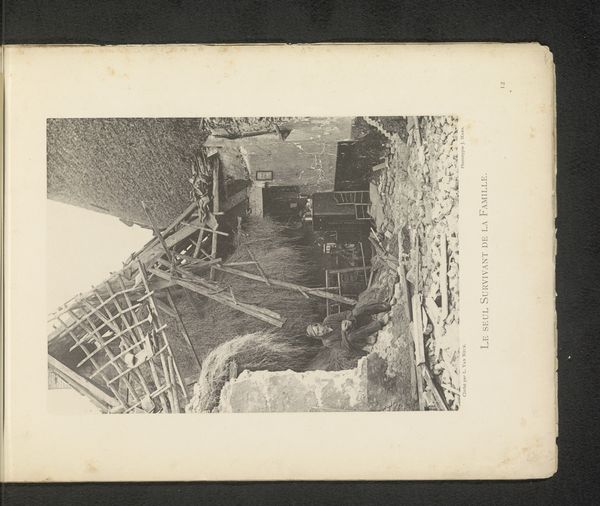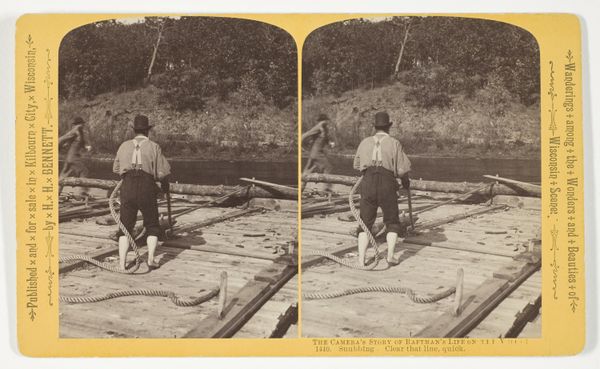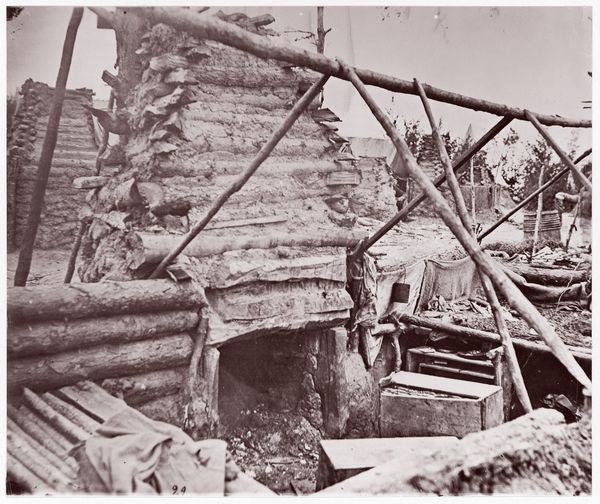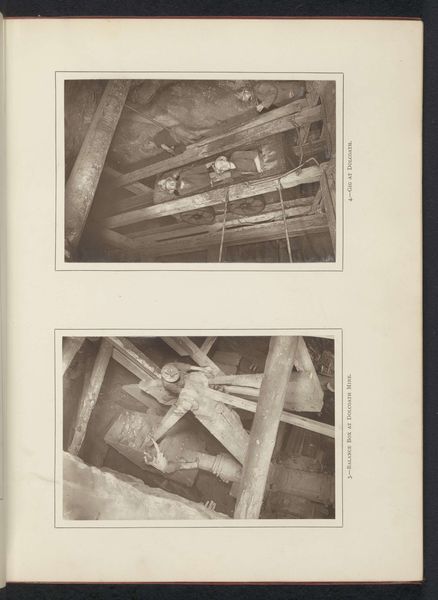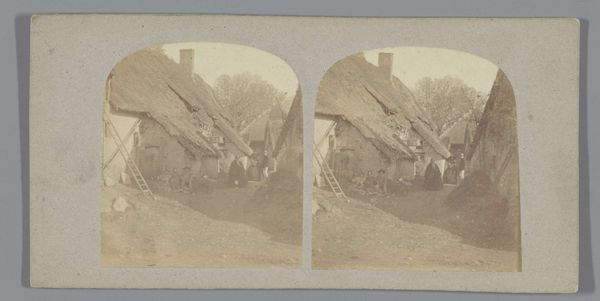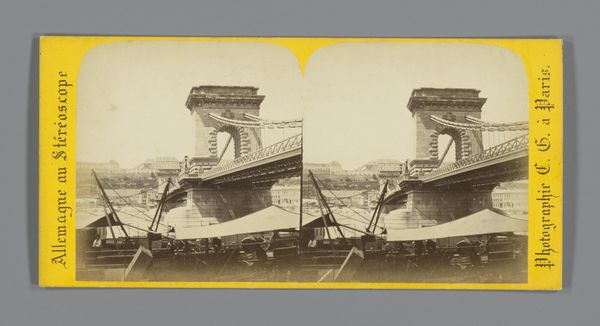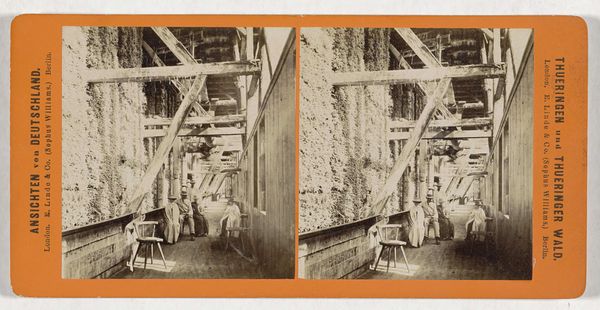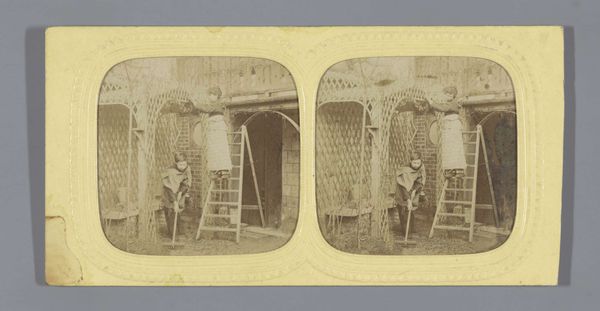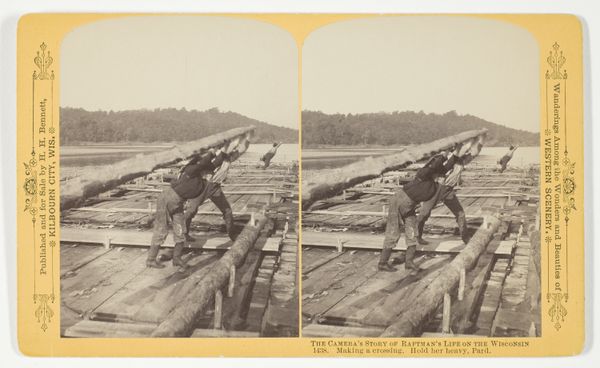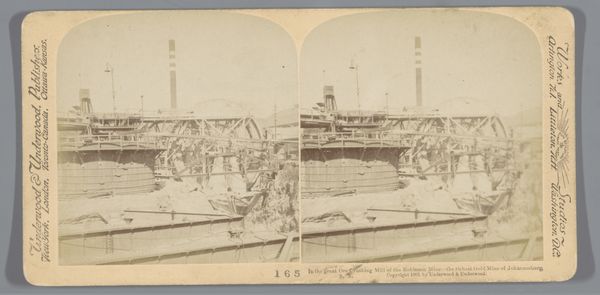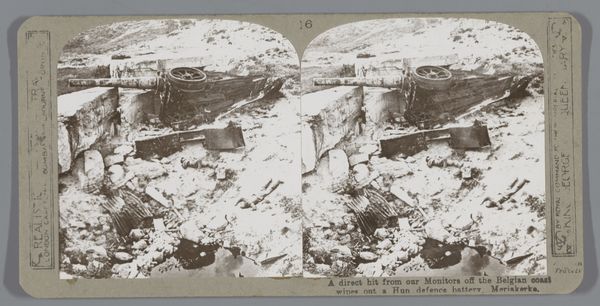
photography, collotype
#
landscape
#
photography
#
collotype
#
coloured pencil
#
orientalism
#
sketchbook drawing
Dimensions: height 88 mm, width 178 mm
Copyright: Rijks Museum: Open Domain
Curator: Looking at this stereograph, I am immediately struck by the image of a world violently interrupted. Editor: I agree. There's an arresting sense of instability. It seems as though what was whole is now undone. What are we seeing here? Curator: This collotype is entitled "Gezicht op een opgeblazen brug over de Valsrivier bij Kroonstad, Zuid-Afrika"—or, in English, "View of a blown-up bridge over the Vals River near Kroonstad, South Africa." It was created in 1901. Editor: Ah, that title contextualizes what felt initially like an expression of chaos. The imagery speaks to colonialism’s disregard for infrastructure in times of war and resistance, but also resistance to the British colonizers. It speaks to the destructive path war carves through communities. Curator: Precisely. The image of the destroyed bridge acts as a symbol of shattered communication and disrupted passage. It invites us to reflect on the human cost of conflict. This broken railway bridge is more than just an engineering failure; it embodies interrupted journeys, fragmented societies, and the painful disruption of everyday life. Editor: I’m curious, why a stereograph? It feels odd to render something so violent in a format often used for pleasant views. The destruction feels both immediate and somehow…distant. Curator: The use of a stereograph in 1901 offered viewers an immersive experience, enabling them to ‘be there’ at this site of devastation. This very immersive quality also transforms the ruin into something almost picturesque, aestheticizing destruction itself, potentially desensitizing audiences to its brutal reality. It allows viewers safe remove. Editor: An important point about detachment. The very act of viewing violence from afar creates a distance that complicates the photograph’s relationship to witnessing. Are we meant to lament, understand, or simply observe the results of a conflict? The image remains ambiguous. Curator: A powerful reminder that images carry complex histories, never existing outside of the ideologies that shape their creation and reception. Editor: Yes, I leave with a sense that destruction visualized asks much more than answers, perhaps inviting an ongoing conversation about history, responsibility, and representation itself.
Comments
No comments
Be the first to comment and join the conversation on the ultimate creative platform.
